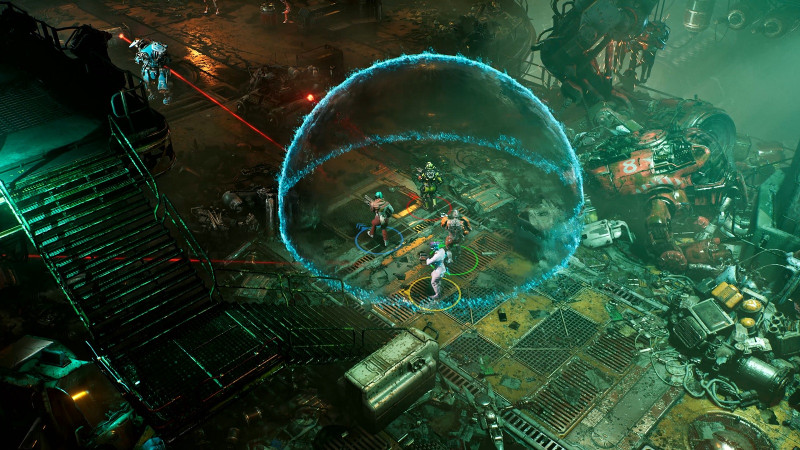
There is too much back-and-forth near the end, especially if you seek to clean up side missions before going on with the story.Īs an isometric top-down shooter with RPG elements, the game holds up due to its enjoyable action. While keeping the tiers separate helps sell the world, it grows tiring when nothing much changes. Some of this takes place around the promenade of the central hub and then taking the elevator up or down. There is a fast-travel system, via metro stations and a taxi, but fast travel does not work across the four tiers or from within interiors. Enemies across the world are at a set level and do eventually respawn, so trampling back through areas means repeating the same combat encounters.


Side missions are rather humdrum, often more like fetch quests, despite some unique rewards. Story missions are straightforward and they typically involve progressing gradually up the four main tiers of the arcology and shooting whatever gets in your way. Every area is a visual treat for fans of cyberpunk and the rewards continue for the entire game (about 15 hours). This insane detail is sustained over a big playable area, with many districts to visit: flooded streets, colorful bars, bot-infested repair bays, busy spaceports, gang hideouts, corporation facilities, and Chinese-style markets. The three-dimensional backdrops have real depth, with layers of structures and moving objects. The level design and art is consistently outstanding, with neon lights, grimy floors, trash piles, graffiti, advertising signs, and apt corporation logos. The multi-tier structure is overflowing with intricate detail. What is clear is that the arcology is a truly stunning location. Even with a great codex that shows off fantastic designs, there are just too many nouns and acronyms to keep up. Unfortunately the terminology is rather extensive and confusing. The world is an amalgamation of many cyberpunk universes, yet it also feels unique due to unfamiliar alien species and other changes. There is plenty of depth in terms of races, technology, corporations, and locations. Datapads provide mini stories and characters offer extra context on a wide range of things. All this is made hard when gangs are keen on exploiting the lawless situation and some holdouts are trying to bring a dead corporation back to life. Once these immediate needs are sorted, another corporation makes contact and asks for assistance in deciphering what happened to The Ascent Group. With no corporation to pay slaves, manage resources, or give out work orders, things are about to descend into chaos.įortunately a lower-deck habitation manager recognizes the upcoming disaster and gathers others to start dishing out resources, with your help to shoot any that want to take more than their share.

#The ascent review game Offline#
But The Ascent Group goes offline for an unknown reason. After succeeding, by killing a few genetic abominations, it is back to the lower decks for another assignment. You are a new member of The Ascent Group and are thrown into the deep, dark bowels of the arcology to fix the waste processing system. This arcology is split into tiers, with the rich and powerful enjoying the sunlight above the clouds and the poor workers breathing filth in cramped habitations stacks on the lower decks. The largest corporation is The Ascent Group, and they own the biggest metropolis (aka arcology), home to hundreds of thousands of beings stacked on top of each other.

Most individuals on the planet are indentured under a corporation: slaves until they die. The Ascent takes place on planet Veles, home to powerful corporations and many different alien species.


 0 kommentar(er)
0 kommentar(er)
